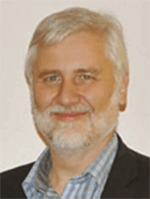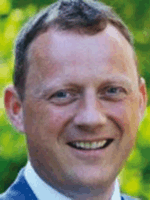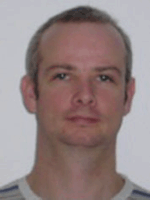Marine seismic acquisition: efficiency and environment, new technologies applied in Australia
Martin Bayly A C , Michelle Tham A , Peter Watterson A , Binghui Li B and Kevin Moran AA WesternGeco, Level 5, 256 St Georges Terrace, Perth, WA 6000, Australia.
B SLR Consulting Australia Pty Ltd, 589 Hay Street, Jolimont, WA 6014, Australia.
C Corresponding author. Email: mbayly@slb.com
The APPEA Journal 57(2) 704-708 https://doi.org/10.1071/AJ16072
Accepted: 28 March 2017 Published: 29 May 2017
Abstract
The design of successful marine seismic surveys is driven by many factors, two prime issues being efficiency and environmental impact. Efficiency is primarily driven by reduction of non-productive time and creating the largest sub-surface illumination area possible in the shortest time. In addition, public opinion and governmental regulations are requiring the industry to minimise their environmental impact. One aspect is reducing the overall sound exposure level (SEL) of the source into the marine environment. Using recent Australian examples, we will discuss and demonstrate the use of two new technology groups that address these concerns.
The first is the use of a new type of seismic air-gun with optimal output over the range of frequencies commonly used in seismic exploration, while limiting potential environmental effects from unnecessary high-frequency emissions. The second is continuous data acquisition along the entire boat traverse, including the turns, thereby reducing non-productive vessel time. Both are described with examples from a recent survey acquired offshore north-west Australia.
Keywords: acquisition in vessel turns, Carnarvon Basin, fine spaced multi-sensor streamer, marine towed streamer, noise attenuation, reduced high frequency energy airgun, source monitoring.

Martin Bayly is an advising geophysicist for WesternGeco based in Perth, Australia. Martin joined GSI, a legacy company of WesternGeco, in 1981. Martin is the WesternGeco Technology Manager for the Asia Pacific region, His focus in recent years has been new marine technology implementation, survey design, noise attenuation and imaging. |

Michelle Tham is a principal geophysicist for WesternGeco based in Kuala Lumpur. Michelle joined HGS, a legacy company of WesternGeco, in 1987. Michelle is the WesternGeco Geosolutions Technology Support Manager for the Asia Pacific region. Her focus in recent years has been new marine processing technology implementation and marine survey design. |

Peter Watterson is a principal geophysicist for WesternGeco based in London. Peter joined Western Geophysical, a legacy company of WesternGeco, in 1991. Peter is WesternGeco’s Global Marine Geosolutions Technology Commercialisation Manager, His focus is testing and implementation of new software and techniques for emerging and advanced marine seismic systems. |

Kevin Moran is a marine multi-client project manager for WesternGeco based in Perth. Kevin joined Geco, a legacy company of WesternGeco, in 1991 as a field seismologist. His focus in recent years has been planning and implementing very large marine acquisition and processing projects. |

Binghui Li is an associate at SLR Consulting Australia Pty Ltd based in Perth. His key areas of interest are acoustic sound modelling and software development. He has a focus on marine sound modelling of seismic surveys for environmental permit submission to regulatory authorities. |
References
Coste, E. D., Gerez, D., Groenaas, H., Hopperstad, J. F., Larsen, O. P., Laws, R., Norton, J., Padula, M., and Wolfstirn, M. (2014). Attenuated high-frequency emission from a new design of airgun. In 84th Annual International Meeting, SEG Technical Program Expanded Abstracts 2014, pp. 132-137.Gerez, D., Groenaas, H., Larsen, O. P., Wolfstirn, M., and Padula, M. (2015). Controlling air-gun output to optimize seismic content while reducing unnecessary high-frequency emissions. In 85th Annual International Meeting, SEG Technical Program Expanded Abstracts 2015, pp. 154–158.
Hall, N., Clever, B., and Lunn, S. (2015). The diary of a seismic survey: going around in circles in the Southern North Sea. In Proceedings from the 8th Petroleum Geology of Northwest Europe Conference: 50 years of learning – a platform for present value and future success, 28–30 September 2015, The Queen Elizabeth II Conference Centre London.
National Oceanic and Atmospheric Administration (NOAA) (2016). Technical Guidance for Assessing the Effects of Anthropogenic Sound on Marine Mammal Hearing, Underwater Acoustic Thresholds for Onset of Permanent and Temporary Threshold Shifts. NOAA Technical Memorandum NMFS-OPR-55, July 2016. Available at: http://www.nmfs.noaa.gov/pr/acoustics/Acoustic%20Guidance%20Files/opr-55_acoustic_guidance_tech_memo.pdf [verified 9 May 2017]
Özbek, A., Vassallo, M., Özdemir, K., van Manen, D. J., and Eggenberger, K. (2010). Crossline wavefield reconstruction from multicomponent streamer data: part 2 – joint interpolation and 3D up/down separation by generalized matching pursuit. Geophysics 75, WB69–WB85.
| Crossline wavefield reconstruction from multicomponent streamer data: part 2 – joint interpolation and 3D up/down separation by generalized matching pursuit.Crossref | GoogleScholarGoogle Scholar |
Patenall, R., and Brice, T. (2014). Reducing footprint and increasing coverage using modern seismic acquisition techniques – a New Zealand case study. Advantage NZ: Geotechnical Petroleum Forum, 1–3 April 2014, Wellington, New Zealand.
Southall, B. L., Bowles, A. E., Ellison, W. T., Finneran, J. J., Gentry, R. L., Greene, C. R., Kastak, D., Ketten, D. R., Miller, J. F., Nachtigall, P. E., Richardson, W. J., Thomas, J. A., and Tyack, P. L. (2007). Marine mammal noise exposure criteria: initial scientific recommendations Aquatic Mammals 33, 411–522.
| Marine mammal noise exposure criteria: initial scientific recommendationsCrossref | GoogleScholarGoogle Scholar |
Watterson, P., Mahat, S., Cunnell, C., and Ramsumair, R. (2014). Increasing acquisition efficiency by acquisition of data during turns, using a multi-measurement streamer. In 77th EAGE Conference and Exhibition 2015: Earth Science for Energy and Environment, 1–4 June 2015, Madrid, Spain. p. 2392.
Ziolkowski, A., Parkes, G., Hatton, L., and Haugland, T. (1982). The signature of an air gun array: computation from near-field measurements including interactions. Geophysics 47, 1413–1421.
| The signature of an air gun array: computation from near-field measurements including interactions.Crossref | GoogleScholarGoogle Scholar |


